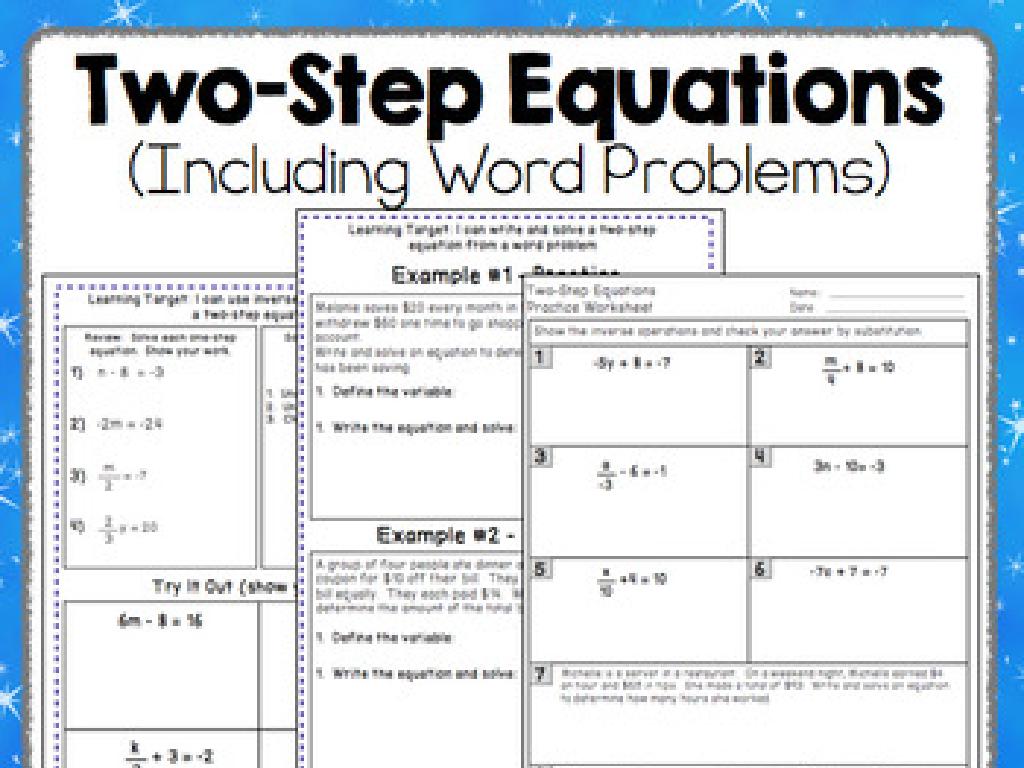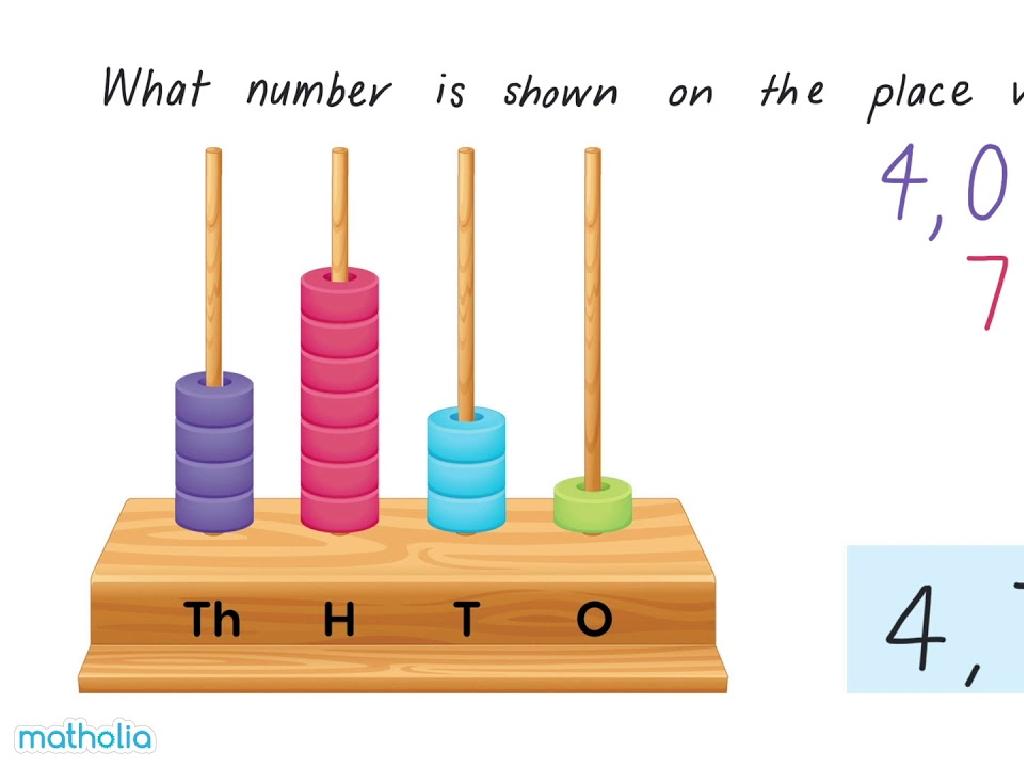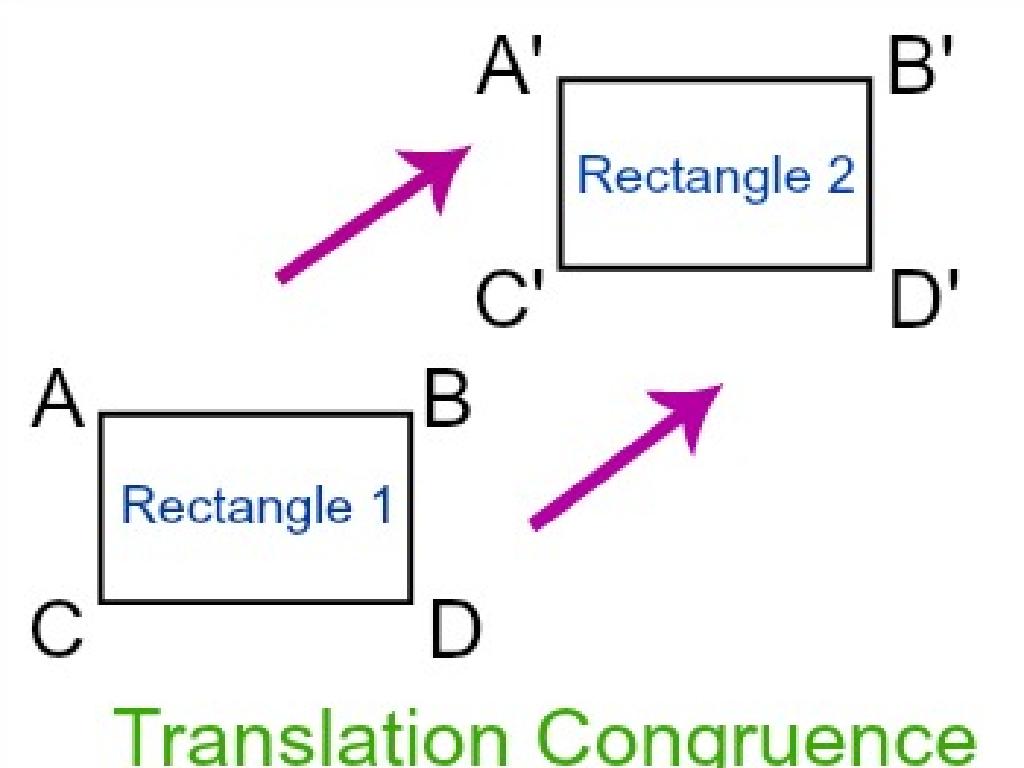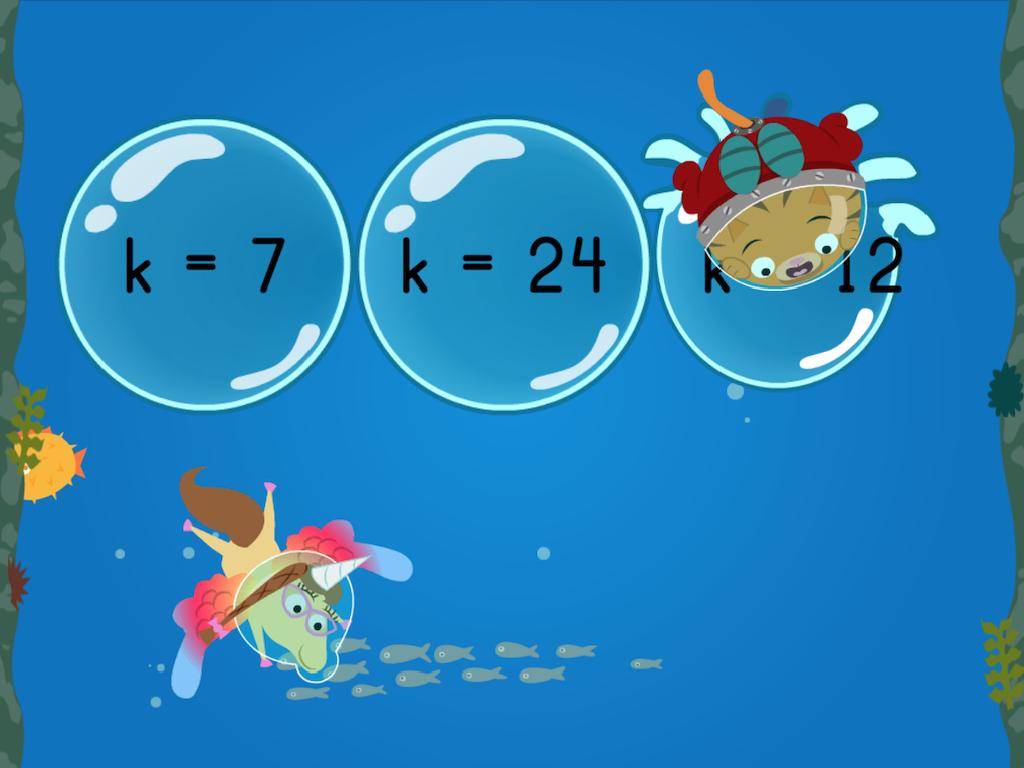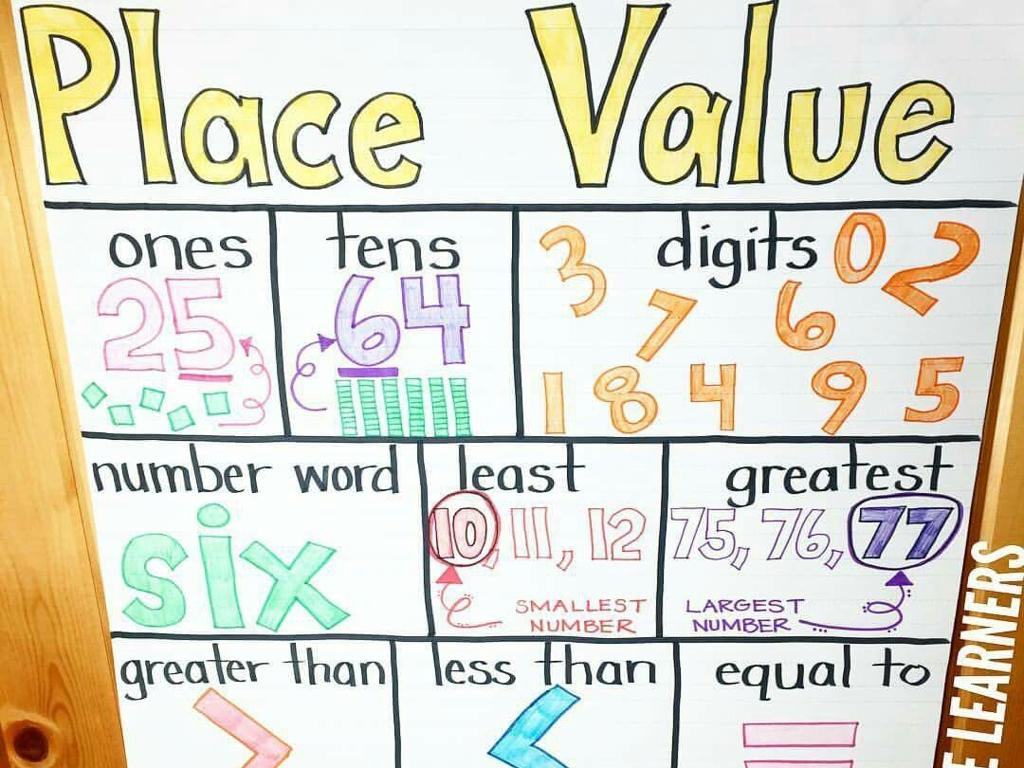Use The Correct Verb With Compound Subjects
Subject: Language arts
Grade: Eighth grade
Topic: Subject-Verb Agreement
Please LOG IN to download the presentation. Access is available to registered users only.
View More Content
Mastering Subject-Verb Agreement with Compound Subjects
– The essence of subject-verb agreement
– Defining a compound subject
– A compound subject consists of two or more subjects joined by a conjunction.
– Matching verbs with compound subjects
– Verbs must agree in number with compound subjects to make sense.
– Significance of correct verb usage
– Using the right verb form is crucial for clarity and correctness in writing.
|
This slide introduces the concept of subject-verb agreement and its importance in constructing grammatically correct sentences. Emphasize that a compound subject, which is made up of two or more individual subjects connected by ‘and,’ ‘or,’ or ‘nor,’ requires a verb that matches in number. For example, ‘The cat and dog are playing’ uses a plural verb because there are two subjects. Highlight the necessity of using the correct verb form to ensure sentences are clear and accurate. Provide additional examples and encourage students to create sentences with compound subjects. Discuss potential pitfalls, such as when the subjects are singular but together represent a single idea, in which case a singular verb is used.
Identifying Compound Subjects
– Define a compound subject
A compound subject consists of two or more subjects joined by a conjunction.
– Examples of compound subjects
For instance, ‘The cat and dog are playing’, where ‘cat and dog’ form the compound subject.
– Group activity on compound subjects
In groups, find sentences in books and identify the compound subjects.
– Understanding subject-verb agreement
|
This slide introduces the concept of compound subjects, which are two or more subjects connected by a conjunction such as ‘and’ or ‘or’ that share the same verb. Provide clear examples to illustrate compound subjects. For the group activity, students will work together to locate compound subjects in sentences from books or provided materials. This activity helps reinforce their understanding of compound subjects and prepares them for the subsequent lesson on subject-verb agreement. Ensure that each group has diverse reading materials and encourage discussion about why the identified subjects are compound. The goal is for students to recognize how the elements of a sentence work together to convey meaning.
Mastering Subject-Verb Agreement
– Singular subjects match singular verbs
– ‘The cat runs’ not ‘The cat run’
– Plural subjects agree with plural verbs
– ‘Dogs bark’ not ‘Dogs barks’
– Recognize and apply exceptions
– ‘Neither the plates nor the cup is’ not ‘are’
– Practice with compound subjects
– ‘Peanut butter and jelly is’ not ‘are’ my favorite snack
|
This slide introduces the basic rules of subject-verb agreement, which is crucial for constructing grammatically correct sentences. Emphasize that verbs must agree in number with their subjects; singular subjects take singular verbs, while plural subjects take plural verbs. Highlight common exceptions, such as when two singular nouns joined by ‘and’ refer to a single idea or when using ‘neither/nor’ or ‘either/or’ constructions. Provide examples and encourage students to create sentences with compound subjects to practice this concept. Instruct them to pay special attention to the subject closest to the verb in tricky sentences. This foundational knowledge will help students write more accurately and with greater confidence.
Compound Subjects and Verb Agreement
– Compound subjects joined by ‘and’
– When two subjects are connected by ‘and’, they typically require a plural verb form.
– Usually pair with plural verbs
– ‘The cat and the dog are playing together’ shows correct agreement.
– Example: Cat and dog playing
– Significance of correct verb usage
– Using the correct verb form ensures clarity and grammatical accuracy in writing.
|
This slide focuses on the rule that compound subjects (two or more subjects joined by ‘and’) generally take a plural verb. It’s crucial for students to understand that the verb must agree with the compound subject as a whole unit. Provide examples and have students create sentences with compound subjects to practice. Emphasize the importance of subject-verb agreement in ensuring that sentences are clear and grammatically correct. This foundational grammar skill will improve their writing and communication abilities.
Compound Subjects with Singular Verbs
– Single entity compound subjects
– When two subjects make up one unit or idea, they take a singular verb.
– ‘Peanut butter and jelly’ as one idea
– Think of ‘peanut butter and jelly’ as a single sandwich, not two separate things.
– Class discussion on similar examples
– Share examples where two subjects combine to mean one thing, like ‘Macaroni and cheese’.
– Understanding subject-verb agreement
|
This slide focuses on instances where compound subjects, which usually consist of two or more nouns joined by ‘and’, take a singular verb because they refer to a single entity or idea. Use ‘peanut butter and jelly’ as a clear example to show that even though it consists of two different items, it is considered one favorite sandwich, hence the singular verb ‘is’. During the class discussion, encourage students to come up with additional examples, such as ‘Fish and chips is a popular meal’ or ‘The bed and breakfast is fully booked’. This will help them understand how to correctly apply subject-verb agreement rules in sentences with compound subjects that represent one idea.
Tricky Subject-Verb Agreement Scenarios
– Indefinite pronouns in compound subjects
– Words like ‘anyone’ or ‘everyone’ may require singular verbs even in compound subjects.
– Collective nouns agreement
– Groups acting as a single unit (e.g., ‘team’) take a singular verb, while acting individually takes a plural verb.
– Mixed singular and plural nouns
– Treat the closest noun to the verb when subjects have mixed number to determine the correct verb form.
– Strategies for correct verb usage
– Use rules and intuition to decide on singular or plural verbs in tricky cases.
|
This slide addresses complex cases in subject-verb agreement, focusing on indefinite pronouns, collective nouns, and compound subjects with mixed nouns. Indefinite pronouns often take singular verbs, but when paired with other nouns, the agreement can be challenging. Collective nouns can be singular or plural based on whether the group acts as one or separately. With mixed subjects, the verb usually agrees with the nearest noun. Teachers should provide examples, like ‘The team is winning’ versus ‘The team are arguing among themselves,’ and ‘The teacher, along with the students, is excited.’ Discuss strategies for identifying the correct verb form and encourage students to practice with exercises.
Practice Makes Perfect: Verb Agreement
– Complete the worksheet individually
– Pair up for sentence correction
– Find and fix errors together
– Focus on subject-verb agreement
– Ensure verbs agree with compound subjects
– Discuss answers as a class
|
This slide introduces a classroom activity focused on practicing subject-verb agreement with compound subjects. Students will start by completing a worksheet on their own, which will help them identify and understand the common mistakes made in subject-verb agreement. Afterward, they will work in pairs to correct sentences that contain subject-verb agreement errors, allowing them to collaborate and learn from each other. Finally, the class will come together to share and discuss the answers, providing an opportunity for collective learning and clarification of any misunderstandings. The teacher should monitor the pairs to ensure active participation and provide guidance where necessary. Possible activities for different students could include creating their own sentences with compound subjects, identifying correct and incorrect examples from a provided list, or even a small competition to see which pair can correct the most sentences accurately.
Class Activity: Crafting Sentences with Compound Subjects
– Create sentences with compound subjects
– Use verbs that agree with your subjects
– Remember, if the compound subject is joined by ‘and’, it’s plural
– Share your sentences with the class
– Practice speaking your sentences aloud
– Engage in peer review for accuracy
– Listen to feedback and discuss verb choices
|
This activity is designed to reinforce the concept of subject-verb agreement, particularly with compound subjects. Students will create their own sentences using compound subjects and select the appropriate verbs to match. Encourage creativity and diversity in sentence structure. After writing, students will present their sentences to the class, providing an opportunity for public speaking and peer review. As a teacher, facilitate the discussion on why certain verbs are chosen and correct any misconceptions. Possible activities: 1) Pair students to create sentences together, 2) Have a contest for the most creative sentence, 3) Create a compound subject relay where each student adds to the sentence, 4) Use sentence strips on a board to mix and match subjects and verbs, 5) Have students write sentences on the board for class review.
Conclusion: Mastering Subject-Verb Agreement
– Review: Compound Subject Agreement
A compound subject combines two or more subjects with ‘and’ usually requiring a plural verb.
– Importance of Subject-Verb Mastery
Strong writing skills are built on correct grammar, enhancing clarity and comprehension.
– Homework: Craft a Short Story
Create a narrative with at least five sentences using compound subjects correctly.
– Ensure Proper Verb Usage
Check your story for verbs that agree with your compound subjects to practice your skills.
|
As we wrap up, let’s revisit the main points of subject-verb agreement when dealing with compound subjects. Understanding how to match subjects and verbs correctly is crucial for clear and effective writing. For homework, students will apply what they’ve learned by writing a short story that includes compound subjects with the correct verb agreement. This exercise will help reinforce their understanding and provide practical experience in identifying and correcting subject-verb agreement errors. Encourage creativity in their stories, and remind them to proofread their work for subject-verb agreement.

